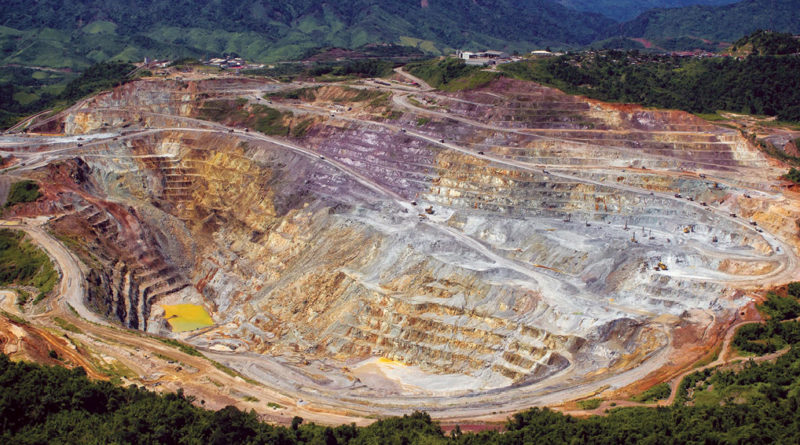Phu Bia Mining Set To Increase Copper, Gold, Silver production
Source: Vientiane Times
Phu Bia Mining Company is targeting to produce 80,000-90,000 tonnes of copper, 70,000-80,000 oz of gold and 600,000 oz of silver this year at Phu Kham in Anouvong district, Xaysomboun province.
Meanwhile, 178,000 oz of gold and 1.23 million oz of silver will be produced at Ban Houayxai in Longchaeng district, the company reported to Lao media during a site visit last week.
The production of cooper last year in Phu Kham reached 89,187 tonnes, 89,657 oz of gold and 535,198 oz of silver, while in Ban Houayxai it was 127,825 oz of gold and 1.1 million oz of silver.
The process concentrator plant at Phu Kham began production in 2008, and is a large open pit copper, gold and silver mine.
Conventional drill and blast, shovel and truck mining methods are employed, the process plant recovers copper, gold and silver using a standard floatation recovery method which is then shipped to smelters out of the country especially China and India.
55 million tonnes were mined and 18.5 million tonnes milled annually according to the company’s Government Relations Manager, Ms Manilath Arounlangsy.
The processing plant at Ban Houayxai commenced production in 2012, and is a medium sized pit operation for gold and silver orebodies.
It uses conventional drill and blast excavators and truck mining methods, and standardised processes and systems between the site and Phu Kham 25km to the east.
Its processing plant recovers gold and silver by gravity and Carbon-in-Leach Cyanidation methods.
Producing gold and silver doré bars, the mine is scheduled to remain at approximately +100,000 oz a year to 2022.
The projects contribute to government revenue and deliver significant benefits to the Lao economy and people.
They have provided 25,000-30,000 direct and indirect jobs, increased local incomes 5-7 times and local suppliers have been engaged and developed with benefits to the broader economy.
The projects are also contributing to socio-economic development especially tax and other direct government benefits, salary income to Lao employees, expenses on local Lao services, a community development fund, road infrastructure, donations and sponsorship and social security.
The contributions have helped improve people’s living conditions and many farming families in the areas, especially Nam Mo and Nam Nhone, have better income by growing agricultural produce and breeding fish to supply the projects.
A major issue that people are concerned about is how their living conditions and incomes will be affected once the projects finish in the future.


